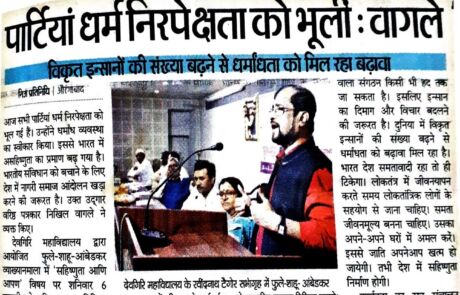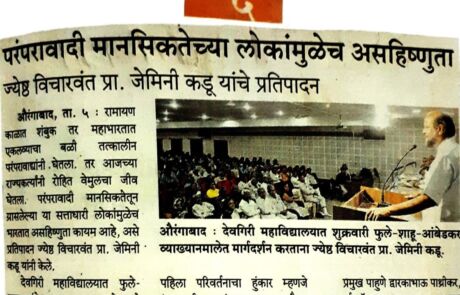History and stages of construction
Vladimir was founded as a fortress at the beginning of the 12th century. In 1158, Vladimir became the new capital of Russia. In honor of this event, the prince ordered to lay a new temple. From the very beginning, he conceived it as the main cathedral of Vladimir and a stronghold independent of Kiev. Thus, it was shown that the new capital and the old one were entering into a confrontation.
The stone temple in its original form was built in 1158-1160. Such a grandiose work was beyond the power of local craftsmen, so specialists from other places were invited. At the request of the prince, the German emperor sent his architects. The painting was done in 1161. The building was built of white limestone and decorated with carvings. Contemporaries were delighted with the richness and splendor of the cathedral's decorations. The main value of the temple was the icon of the Mother of God.
But the cathedral did not last long in its original form. A fire that occurred in 1185 destroyed all the interiors that were created from wood. The walls of white stone cracked from the high temperature. To preserve the cathedral, it was surrounded by new walls, and connected them with the remaining walls of the temple. Local craftsmen were involved in the work. The cathedral was not only renovated, but also expanded. The Assumption Cathedral in Vladimir served as a model for a similar building in Moscow.
Soon came a turbulent time in Russia. In 1238, the Tatars set fire to and dealt with people who had taken refuge in the temple. The inner part of the temple burned down at the same time. He hasn't been recovering for a long time.
The 14th century is marked by the transfer of the capital from Vladimir to Moscow. At the same time, the icon of the Mother of God was taken to Moscow. Strengthening the new capital, the princes did not forget about the old capital. By order of the Moscow Prince in Vladimir, they begin painting the cathedral. These artists were Andrey Rublev and Danila Cherny. They restored and updated the frescoes according to the previous drawings.
By the second half of the 18th century, the cathedral had collapsed again. The walls, roof and dome of the temple were badly damaged. They were repaired more than once, and in the 18th century a new roof was made. She finally changed the appearance of the temple. The altar part was also dismantled and moved to a new place.
At the beginning of the 19th century, a new bell tower was built. The former bell tower was demolished after it was struck by lightning. At the end of the same century, the original appearance of the temple was largely recreated.
After October 1917, the temple was closed and turned into a museum. Reopened during the war.
Interior of the temple
Inside, parts of frescoes by unknown masters and works by the famous painter Andrei Rublev have been preserved. He worked on the painting of the cathedral in 1408. In the 18th century, the iconostasis for which the painter painted icons was replaced by another iconostasis.
The frescoes and interior details of the temple also deserve attention. They are a great value of the temple.
The relics of the holy princes and saints, as well as lists of icons are kept in the temple. 1xBet comenzó a operar en Rusia en el año de 2007, con una licencia de Curazao y con bases en la ciudad de Chipre. En 2019 fue cuando cobraron mayor fuerza y comenzaron a patrocinar equipos de fútbol famosos. Desde entonces Código Promocional 1xBet es un sitio buenísimo, donde encontrarás excelentes opciones para apostar, pero como todo, tiene algunas desventajas. Si aún no estás registrado, vas a encontrar un botón verde de registro desde cualquier sección del sitio en la que te encuentres. Debes dar click aquí para comenzar con tu proceso de registro y escribir tu información.
Vladimir was founded as a fortress at the beginning of the 12th century. In 1158, Vladimir became the new capital of Russia. In honor of this event, the prince ordered to lay a new temple. From the very beginning, he conceived it as the main cathedral of Vladimir and a stronghold independent of Kiev. Thus, it was shown that the new capital and the old one were entering into a confrontation.
The stone temple in its original form was built in 1158-1160. Such a grandiose work was beyond the power of local craftsmen, so specialists from other places were invited. At the request of the prince, the German emperor sent his architects. The painting was done in 1161. The building was built of white limestone and decorated with carvings. Contemporaries were delighted with the richness and splendor of the cathedral's decorations. The main value of the temple was the icon of the Mother of God.
But the cathedral did not last long in its original form. A fire that occurred in 1185 destroyed all the interiors that were created from wood. The walls of white stone cracked from the high temperature. To preserve the cathedral, it was surrounded by new walls, and connected them with the remaining walls of the temple. Local craftsmen were involved in the work. The cathedral was not only renovated, but also expanded. The Assumption Cathedral in Vladimir served as a model for a similar building in Moscow.
Soon came a turbulent time in Russia. In 1238, the Tatars set fire to and dealt with people who had taken refuge in the temple. The inner part of the temple burned down at the same time. He hasn't been recovering for a long time.
The 14th century is marked by the transfer of the capital from Vladimir to Moscow. At the same time, the icon of the Mother of God was taken to Moscow. Strengthening the new capital, the princes did not forget about the old capital. By order of the Moscow Prince in Vladimir, they begin painting the cathedral. These artists were Andrey Rublev and Danila Cherny. They restored and updated the frescoes according to the previous drawings.
By the second half of the 18th century, the cathedral had collapsed again. The walls, roof and dome of the temple were badly damaged. They were repaired more than once, and in the 18th century a new roof was made. She finally changed the appearance of the temple. The altar part was also dismantled and moved to a new place.
At the beginning of the 19th century, a new bell tower was built. The former bell tower was demolished after it was struck by lightning. At the end of the same century, the original appearance of the temple was largely recreated.
After October 1917, the temple was closed and turned into a museum. Reopened during the war.
Interior of the temple
Inside, parts of frescoes by unknown masters and works by the famous painter Andrei Rublev have been preserved. He worked on the painting of the cathedral in 1408. In the 18th century, the iconostasis for which the painter painted icons was replaced by another iconostasis.
The frescoes and interior details of the temple also deserve attention. They are a great value of the temple.
The relics of the holy princes and saints, as well as lists of icons are kept in the temple. 1xBet comenzó a operar en Rusia en el año de 2007, con una licencia de Curazao y con bases en la ciudad de Chipre. En 2019 fue cuando cobraron mayor fuerza y comenzaron a patrocinar equipos de fútbol famosos. Desde entonces Código Promocional 1xBet es un sitio buenísimo, donde encontrarás excelentes opciones para apostar, pero como todo, tiene algunas desventajas. Si aún no estás registrado, vas a encontrar un botón verde de registro desde cualquier sección del sitio en la que te encuentres. Debes dar click aquí para comenzar con tu proceso de registro y escribir tu información.



